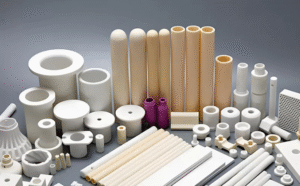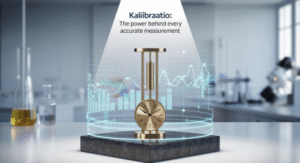
Sodiceram is taking the world by storm, transforming industries with its unmatched strength and versatility. This advanced ceramic material stands out for its durability, heat resistance, and eco-friendly properties. Whether you’re in manufacturing, aerospace, or medical fields, Sodiceram offers solutions that push boundaries. In this article, we’ll explore what makes Sodiceram unique, its applications, and why it’s a top choice for modern innovation. Get ready to dive into the world of Sodiceram and uncover how it’s shaping the future!
What Is Sodiceram?
Sodiceram is an advanced ceramic material engineered for superior performance in demanding environments. Unlike traditional ceramics, it combines sodium-based compounds with cutting-edge processing techniques. Consequently, it delivers exceptional strength, thermal stability, and chemical resistance. For example, industries use Sodiceram in high-temperature settings where other materials fail. Its unique composition allows it to withstand extreme conditions without compromising integrity. Moreover, Sodiceram is lightweight, making it ideal for applications requiring both durability and efficiency. By blending innovation with practicality, Sodiceram sets a new standard for ceramic materials in 2025. Its rise reflects a growing demand for sustainable, high-performance solutions across various sectors.
The Science Behind Sodiceram’s Strength
Sodiceram’s remarkable properties stem from its molecular structure. Specifically, its sodium-enhanced lattice creates a robust framework that resists cracking. This structure, combined with advanced sintering processes, ensures unmatched durability. For instance, the material maintains stability at temperatures exceeding 1,500°C. Additionally, its low thermal conductivity minimizes heat transfer, protecting surrounding components. Furthermore, Sodiceram’s resistance to corrosion makes it ideal for harsh chemical environments. Scientists have optimized its production to reduce energy consumption, aligning with eco-friendly goals. As a result, Sodiceram outperforms traditional ceramics like alumina or zirconia in both strength and sustainability. This scientific breakthrough drives its popularity in cutting-edge industries.
Key Benefits of Sodiceram
Sodiceram offers a range of benefits that make it a standout choice. Firstly, its exceptional durability ensures long-lasting performance, reducing replacement costs. Secondly, its heat resistance allows it to thrive in extreme conditions, such as aerospace engines. Moreover, Sodiceram’s lightweight nature enhances efficiency in applications like automotive parts. Additionally, its eco-friendly production process appeals to sustainability-focused industries. For example, manufacturers can reduce their carbon footprint while maintaining high standards. Furthermore, Sodiceram’s versatility allows customization for specific needs, from medical implants to industrial tools. Ultimately, these advantages position Sodiceram as a leader in advanced materials, driving innovation across multiple fields in 2025.
Applications of Sodiceram in Industry
Sodiceram’s versatility fuels its adoption across diverse industries. In aerospace, it’s used in turbine blades to withstand extreme heat. Similarly, the automotive sector employs Sodiceram for lightweight, durable engine components. Moreover, in the medical field, its biocompatibility makes it ideal for implants and prosthetics. For instance, dental crowns made from Sodiceram offer unmatched strength and aesthetics. Additionally, the electronics industry leverages its insulating properties for circuit boards. Furthermore, Sodiceram’s chemical resistance benefits chemical processing plants. By addressing specific industry needs, Sodiceram enhances performance and efficiency. As a result, its applications continue to expand, shaping the future of manufacturing and technology in 2025.
Aerospace: Powering High-Performance Engines
In aerospace, Sodiceram revolutionizes engine design. Its ability to endure extreme temperatures ensures reliable performance in jet turbines. For example, turbine blades made from Sodiceram maintain structural integrity under intense heat. Additionally, its lightweight nature reduces fuel consumption, a critical factor in aviation. Moreover, Sodiceram’s resistance to thermal shock prevents cracking during rapid temperature changes. Consequently, manufacturers achieve greater efficiency and safety. Furthermore, its durability extends component lifespans, lowering maintenance costs. By integrating Sodiceram, aerospace companies meet stringent performance and environmental standards. This material’s unique properties make it a cornerstone of next-generation aviation technology in 2025.
Automotive: Driving Efficiency and Durability
Sodiceram transforms the automotive industry with its lightweight, durable properties. Specifically, it’s used in engine components like pistons and valves. These parts benefit from reduced weight, improving fuel efficiency. Additionally, Sodiceram’s heat resistance ensures performance in high-temperature engines. For instance, hybrid vehicles rely on it for reliable battery casings. Moreover, its corrosion resistance extends component life, reducing repair costs. Furthermore, manufacturers appreciate its eco-friendly production, aligning with green initiatives. As a result, Sodiceram enables cars to be more efficient and sustainable. By adopting this material, the automotive sector meets modern demands for performance and environmental responsibility in 2025.
Conclusion
Sodiceram is revolutionizing industries with its strength, versatility, and sustainability. From aerospace to medical applications, it offers unmatched performance and eco-friendly benefits. Moreover, its ability to outperform traditional ceramics makes it a game-changer in 2025. By adopting Sodiceram, businesses can enhance efficiency, reduce costs, and meet environmental goals. Don’t miss out on this innovative material! Explore Sodiceram today, partner with suppliers, and integrate it into your operations. Take the first step toward a sustainable, high-performance future—contact a Sodiceram expert now to transform your industry!
FAQs About Sodiceram
What makes Sodiceram different from other ceramics?
Sodiceram stands out due to its sodium-enhanced composition, offering superior strength, heat resistance, and lightweight properties. Unlike traditional ceramics like alumina, it excels in extreme conditions and is eco-friendly, making it ideal for industries like aerospace and medical in 2025.
How is Sodiceram used in the medical field?
Sodiceram’s biocompatibility makes it perfect for medical implants, such as dental crowns and joint replacements. Its durability and chemical stability ensure long-lasting, safe performance, improving patient outcomes in 2025.
Is Sodiceram environmentally friendly?
Yes, Sodiceram is sustainable. Its production uses less energy, and its durability reduces replacement needs. Additionally, its recyclability supports eco-friendly practices, aligning with 2025’s sustainability goals.
What industries benefit most from Sodiceram?
Aerospace, automotive, medical, and electronics industries benefit most. For example, Sodiceram enhances turbine blades, engine parts, implants, and circuit boards, driving efficiency and innovation in 2025.





